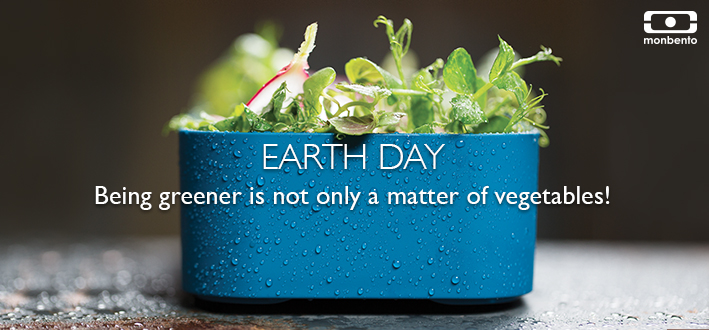
Even though our wonderful planet is worth honouring every day, on 22 April it has a World Day of its own. This is another opportunity to look at our eating habits and find simple ways to protect our planet :-).
What is wrong with our relationship to food?
The love/hate relationship! : According to WHO 1/3 of all food produced is lost or goes to waste (1). Another study shows that households throw around 1.2 million tons of still-edible food away every year, that is around 20kg per person. Our demand for good-looking produce, the way we overestimate our appetite and our haste to throw away food that we no longer feel like eating, are to blame … It’s certainly food for thought!
Ill-fated love: Producing one steak uses the same amount of electricity as lighting a home for 70 hours. One pot of strawberry yoghurt can cover 9,000km if you take into account the journey to our home made by each basic ingredient (strawberries, milk, bacteria, sugar, the pot, lid, labels, etc.) (2). However, we could not imagine stopping eating them!
Overprotectiveness: For every household, packaging accounts for 30% of the weight and 50% of the volume of household waste (3). Because that’s well protected from air, humidity and knocks that we love our little treats!
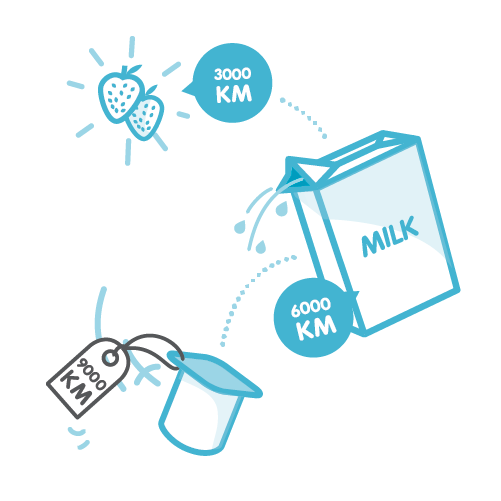
A few simple ways to protect our beautiful natural environment
1/ Don’t confuse UBD with MDD (formerly BBD)
The UBD (Use By Date) is the date at which the product perishes; the MDD (Minimum Durability Date), well, that’s the date from which the product might start to lose some of its freshness (but at which it can still be eaten!!). So let’s move the products with the closest UBD to the front of our fridge and cupboards so that we eat those first and let’s not systematically throw away food that has passed the MDD.
2/ Make a savvy shopping list
Before any shopping trip, let’s check our supplies and plan our meals so that only the things we really need are added to our list! This way we protect nature and our pocket!
3/ Favour local and seasonal fruit and vegetables
Tastier, less expensive, good for the local economy and with fewer air miles (so a smaller carbon footprint!), it’s 100% beneficial to everyone. And let’s not judge on looks alone 😉
For seasonal recipe ideas, use the app to enhance your menu with a red berry smoothie and a greek salad.
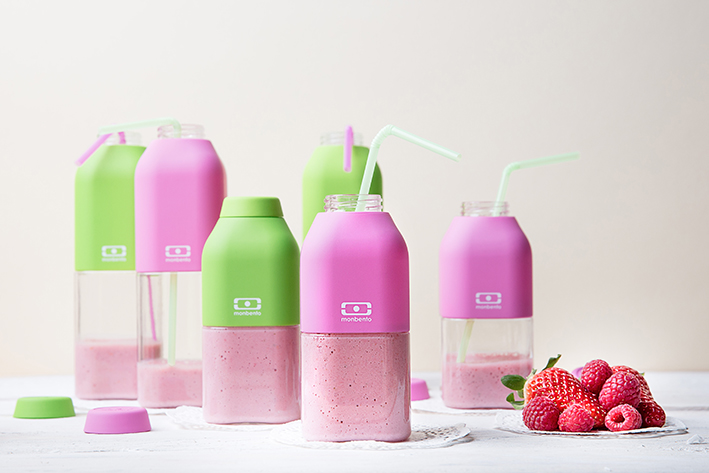
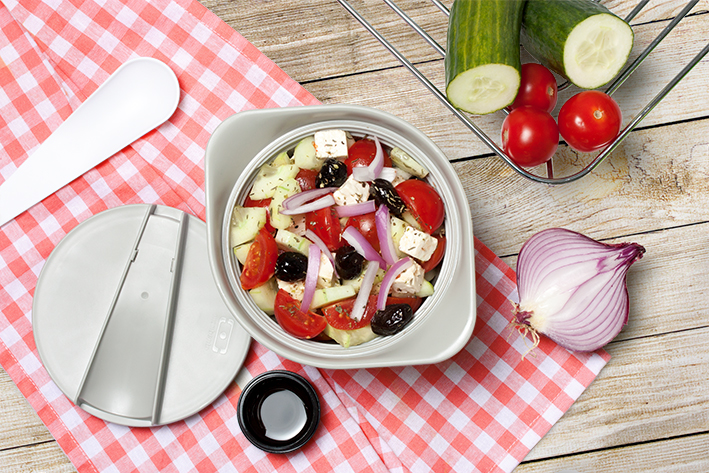
4/ Consume vegetable proteins!
By replacing some animal protein with tofu (why not season with a beef stock cube!), pulses (lentils, chickpeas, haricot beans, etc.) or even micro algae (spirulina, chlorella), we can satisfy our nutritional needs whilst limiting our impact on the environment. Don’t worry about protein deficiency: micro algae, for example, contain 2 to 3 times more protein than meat!
5/ Cut down on packaging
Make use of reusable containers (our online store has a selection ;-)), and in the aisles, avoid over-packaged products (bye-bye to the plastic bowl + lid combo with disposable cutlery and cardboard packaging)! We can go a step further by buying loose pasta, lentils and even cereals!
6/ Use the correct kitchen utensils and containers
And what about if we bought the pots and pans that suit the way we eat? A person living alone only needs small pots and voila: zero risk of cooking too much food!
7/ Take away, freeze or share!
One or two portions of lasagne left over? Why waste them? Take them to work for lunch the next day (thank you bento!), give them to your lovely neighbour (and score in the popularity stakes) or freeze them for when you’re not in the mood to cook!
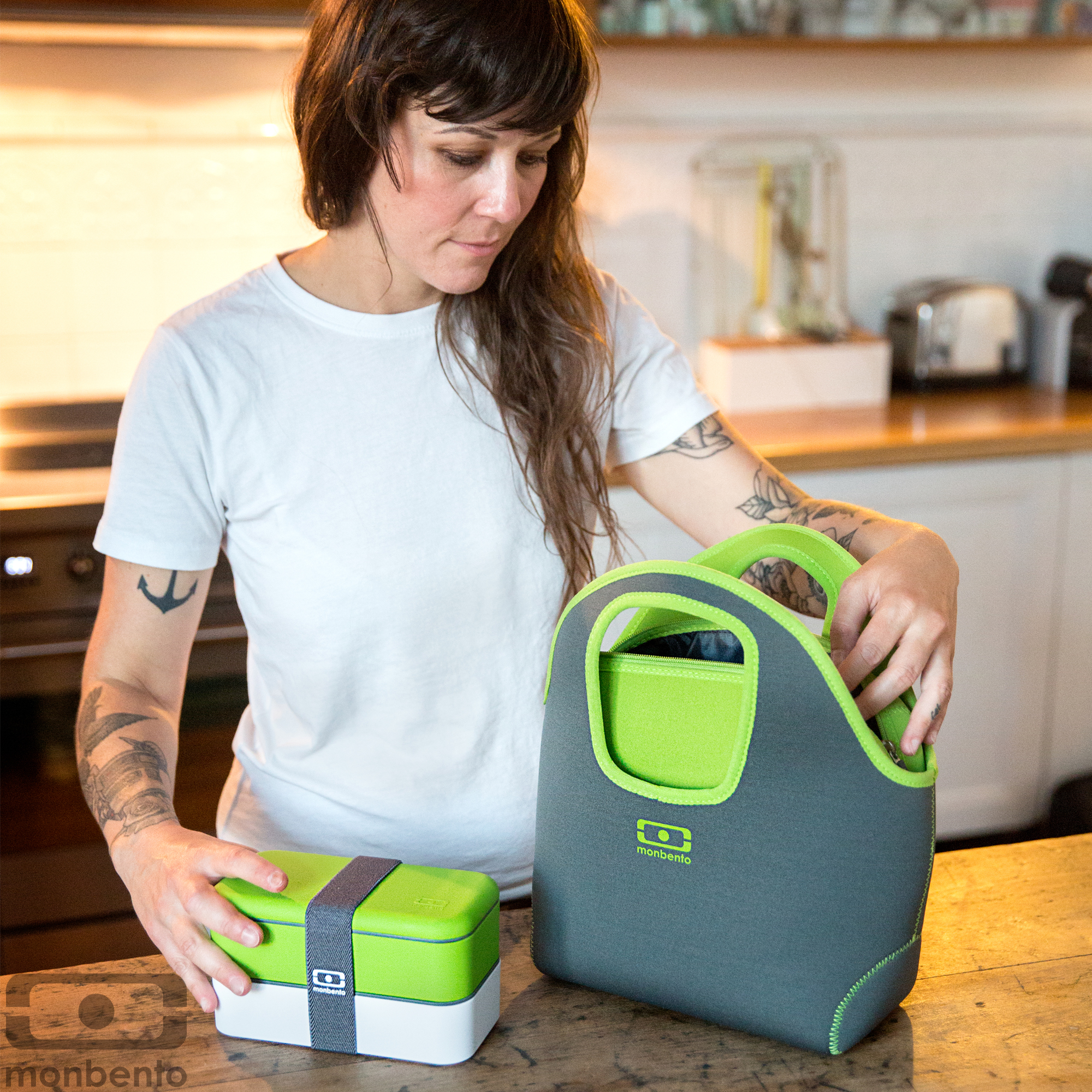
8/ Start using a doggy bag*
Like us, you’re sometimes full half way through a restaurant meal. Let’s ask for a doggy bag, or better still, let’s take along our bento box and finish the meal at home. To change misconceptions about this practice, read our blog article on the subject.
9/ Recycle food!
We could use 100% natural fertilizer for gardening or cultivating our vegetable patch (or our neighbour’s!) by composting peelings, perished fruit and vegetables, leftovers and garden waste (cut grass, dead leaves, etc.). In this way, we reduce the waste that will need processing and give our plants the food they need 😉
So, when will you start? At monbento, we are almost at 90 % good behaviour. But we promise to get better at eating algae and composting!
*Since the implementation on 1st January of the 2011 law on biological waste aimed at reducing food waste in restaurants, more and more sector employees are offering doggy bags in their establishments.
Sources
(1) http://alimentation.gouv.fr/gaspillage-alimentaire-etude
(2) http://www.ademe.fr/sites/default/files/assets/documents/rac-assiette-bdef.pdf
(3) CNIID (National Centre for Independent Waste Data). My retailer uses sustainable packaging: 12 ways to reduce waste by reusing packaging.
